Jilin Province


Introduction
Jilin Province occupies a strategic position in northeastern China, bordering Heilongjiang to the north and Liaoning to the south, with mountains, rivers, and plains shaping its landscape. With more than 27 million people, it combines fertile fields, forested highlands, and river valleys, where agriculture, industry, and culture converge.
From historic towns such as Changchun, Jilin City, and Siping to modern industrial centers, Jilin has long been a land where past and present intertwine. Its position in northeastern China has ensured its importance as a transport, economic, and cultural hub, shaping regional identity for centuries.
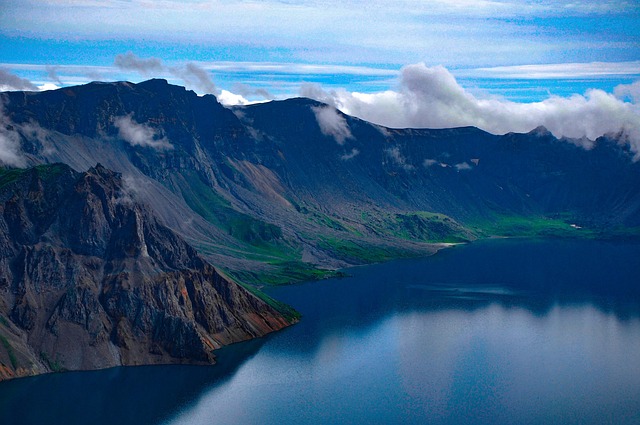

Geography and Key Cities
Jilin features a diverse terrain of mountains, plains, and rivers, including the Songhua River, Yitong River, and Changbai Mountains, with forests covering much of the northeast. The climate is humid continental, with cold, snowy winters and warm, humid summers, influenced by monsoons and Siberian winds.
Changchun, the provincial capital, serves as a major political, industrial, and transport hub.
Jilin City, on the Songhua River, is renowned for winter ice festivals and historical architecture.
Siping, in the western plains, is an agricultural center.
Other key cities include Yanji, with a large Korean ethnic population, and Baishan, known for scenic mountains and mineral resources.




Jilin has a long history shaped by frontier dynamics, trade, and migration. The region was significant during the Ming and Qing dynasties, serving as a base for border defense and settlement of Han and ethnic minority communities. It later developed into a center for agriculture, forestry, and trade with Korea and Russia.
In modern history, Jilin experienced Japanese occupation, industrial expansion during the 20th century, and significant migration waves. Today, Jilin balances its frontier heritage, ethnic diversity, and natural resources with modern urbanization and industry, maintaining its role as a northeastern hub.
Historical Background



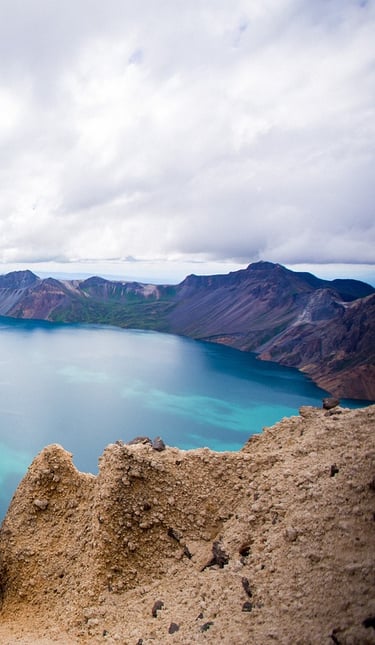
Nature and Landmarks
Jilin combines mountains, rivers, and forests with historical and cultural landmarks. The Changbai Mountains host Heaven Lake, waterfalls, and rich biodiversity, including the Siberian tiger and red-crowned crane. The Songhua River provides riverine landscapes and winter ice scenery, particularly in Jilin City.
Historic towns like Jilin City and Yanji display bridges, temples, and ethnic architecture, while forested areas and parks offer hiking and winter sports. These landscapes show Jilin’s dual nature: natural beauty and sacred mountains alongside towns and cities shaped by history and human settlement.
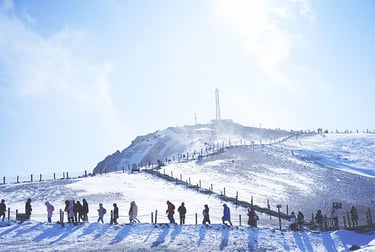

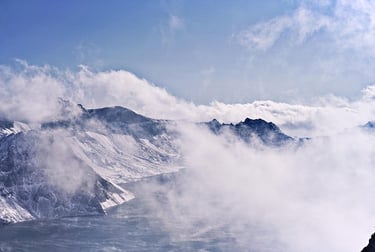

Culture and Cuisine
Jilin’s culture is deeply shaped by its northeastern location, cold winters, and diverse ethnic mix, including Han, Korean, and Manchu communities. In Yanbian, traditional Korean-style houses and temples reflect local heritage, while in Changchun, Soviet-era buildings, historic streets, and riverfront structures show the province’s industrial and political history. Festivals follow both the agricultural calendar and ethnic traditions, from ice and snow celebrations in winter to dragon boat races on the Songhua River and Korean folk dances in Yanbian, blending frontier, riverine, and mountain influences.
Language in Jilin is mainly Mandarin, but Korean in Yanbian and local northeastern dialects preserve regional identity. Traditional arts include embroidery, paper-cutting, wood carving, and folk music, often inspired by the province’s forests, rivers, and mountainous landscapes. These practices continue to play an important role in community life, particularly in rural areas and minority towns.
Jilin’s cuisine is designed for its harsh winters and river-rich environment, emphasizing hearty, warming dishes with wheat, corn, freshwater fish, preserved vegetables, and local meats.
Specialty foods include stir-fried vegetables like potatoes, eggplants, and peppers, freshwater fish from the Songhua River, Jilin-style dumplings with pork, cabbage, or kimchi, and Korean-influenced cold noodles in Yanbian. Long-cooked braised meats and preserved vegetables are common in winter, while cornmeal pancakes and soups remain staples in rural households.
Compared with southern or central provinces, Jilin cuisine is robust, warming, and preservation-focused, reflecting the province’s cold climate, rivers, and frontier traditions, while also showcasing the influence of its ethnic communities.


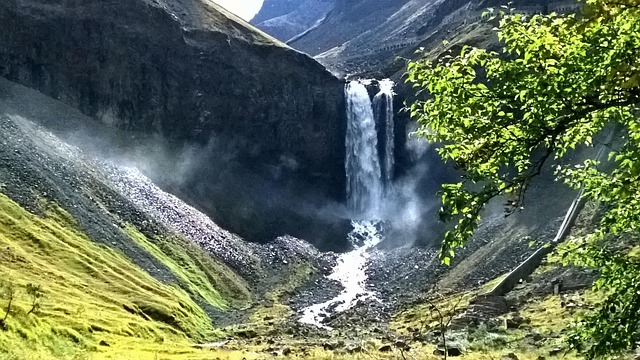

Economy and Modern Development
Jilin is a key economic center in northeastern China. Changchun and surrounding cities developed as industrial and transport hubs during the 20th century, with automotive manufacturing, agriculture, and forestry forming the economic backbone.
Jingyu, Jilin City, and Yanji contribute through mineral resources, agriculture, and cross-border trade with Korea. Tourism, particularly in the Changbai Mountains and winter festivals, contributes significantly to the provincial economy.
Historically, Jilin’s development grew from border defense, agriculture, and forest exploitation, fostering trade routes, settlement, and early industry. Despite urbanization, Jilin maintains cultural and regional traditions, balancing modernity with heritage, while its industrial clusters, transport networks, and natural resources ensure continued growth and connectivity.

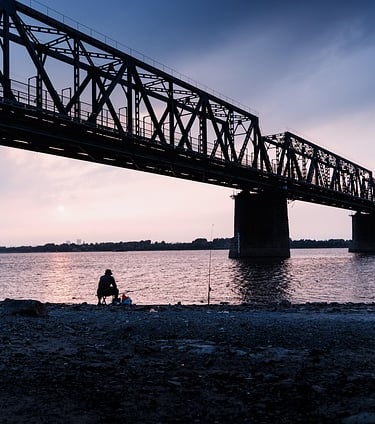
Jilin has produced influential figures in politics, literature, science, and the arts. Scholars, writers, and reformers from Changchun, Jilin City, and Yanji contributed to classical studies, modern education, and industrial development. Revolutionary leaders active in the early 20th century also have roots in the province, reflecting its historical significance.
Jilin is equally renowned for its martial arts traditions, forestry knowledge, and winter sports culture, making it a regional cultural beacon. In modern times, Jilin continues to produce scientists, entrepreneurs, athletes, and artists who embody its frontier, ethnic, and natural heritage.
People and Notable Figures


Current Trends and Daily Life
Jilin daily life is shaped by cold winters, fertile plains, and ethnic traditions. In cities like Changchun and Jilin City, people embrace winter with ice fishing on frozen rivers, sledding, and ice lantern festivals, while along the Songhua and Yalu Rivers, villagers farm corn, soybeans, and ginseng, and harvest wild herbs from surrounding forests. Seasonal activities, from dragon boat races in summer to harvest fairs and local temple celebrations, mark the rhythm of life.
Local communities preserve ethnic heritage, with Korean, Manchu, and Mongol customs visible in food, crafts, and folk performances. Summers offer fishing, mushroom foraging in the Changbai Mountains, and riverside markets selling local produce. Daily life in Jilin blends the practical demands of frontier winters with a deep connection to nature and centuries-old traditions.




Practical Travel and Tips
Best time to visit: Spring and autumn offer mild weather and scenic landscapes, summer is warm and humid, and winter is cold with heavy snow and ice festivals
Getting there: Changchun is a major transport hub with high-speed rail, highways, and an airport, accessible from most major Chinese cities
Highlights: Changbai Mountains, Heaven Lake, Songhua River, Jilin City ice festival, Yanbian ethnic towns, Baishan mountains and rivers
Local etiquette: Expect practical, polite manners, respect temple rituals and ethnic customs
Insider tip: Try Jilin-style dumplings for a hearty meal, explore Changbai Mountains for hiking or winter sports, and visit Yanbian for Korean cultural experiences.
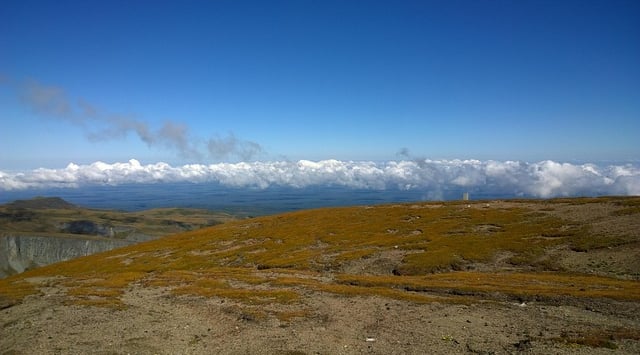







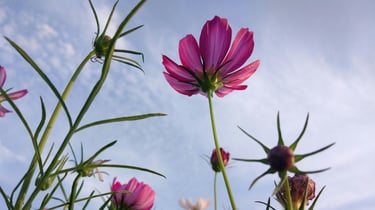





Climate
Plant and animal life
Agriculture
Manufacture
Jilin has a temperate continental climate, with long, cold winters and short, warm summers.
Snow covers the province for several months, with temperatures often dropping below –20°C in January, while July and August see highs around 25–28°C.
Spring arrives late and can be windy, while autumn is crisp and colorful. Rainfall is concentrated in summer, supporting agriculture and forests.
Compared with southern provinces, Jilin experiences more extreme seasonal changes, with winter dominating daily life and influencing culture and activities.
Jilin’s landscapes include mountains, forests, rivers, and wetlands, providing diverse ecosystems.
The Changbai Mountains host larch, pine, birch, and oak forests, home to sables, foxes, wild boars, and Asiatic black bears. Wetlands like the Songhua River basin and the Jilin Bird Nature Reserve shelter migratory birds, including cranes and herons.
Lakes such as Heaven Lake support fish and aquatic plants.
Compared with southern provinces, Jilin’s flora and fauna are adapted to boreal and temperate conditions, with distinct winter survival strategies.
Jilin is an important agricultural province, known for its corn, rice, and soybeans, and is a major contributor to China’s grain output.
Wheat, sorghum, and potatoes are also widely grown. Dairy farming and livestock play a significant role, particularly in western plains.
Aquaculture is present but less dominant than in southern provinces. Fertile soils and sufficient summer rainfall allow productive harvests despite short growing seasons, making agriculture a central part of the provincial economy.
Jilin’s industry combines resource-based and light manufacturing with modern development.
Changchun, the capital, is a hub for automobiles, machinery, and optics, while Jilin City focuses on chemicals, paper, and food processing.
The province also develops pharmaceuticals, electronics, and tourism linked to its natural scenery and winter festivals.
Compared with southern and coastal provinces, Jilin’s industry is more seasonal and resource-oriented but increasingly integrated with technology and regional trade.
Navigation
Main Menu
nathan.china-sphere.com
© 2025. All rights reserved.